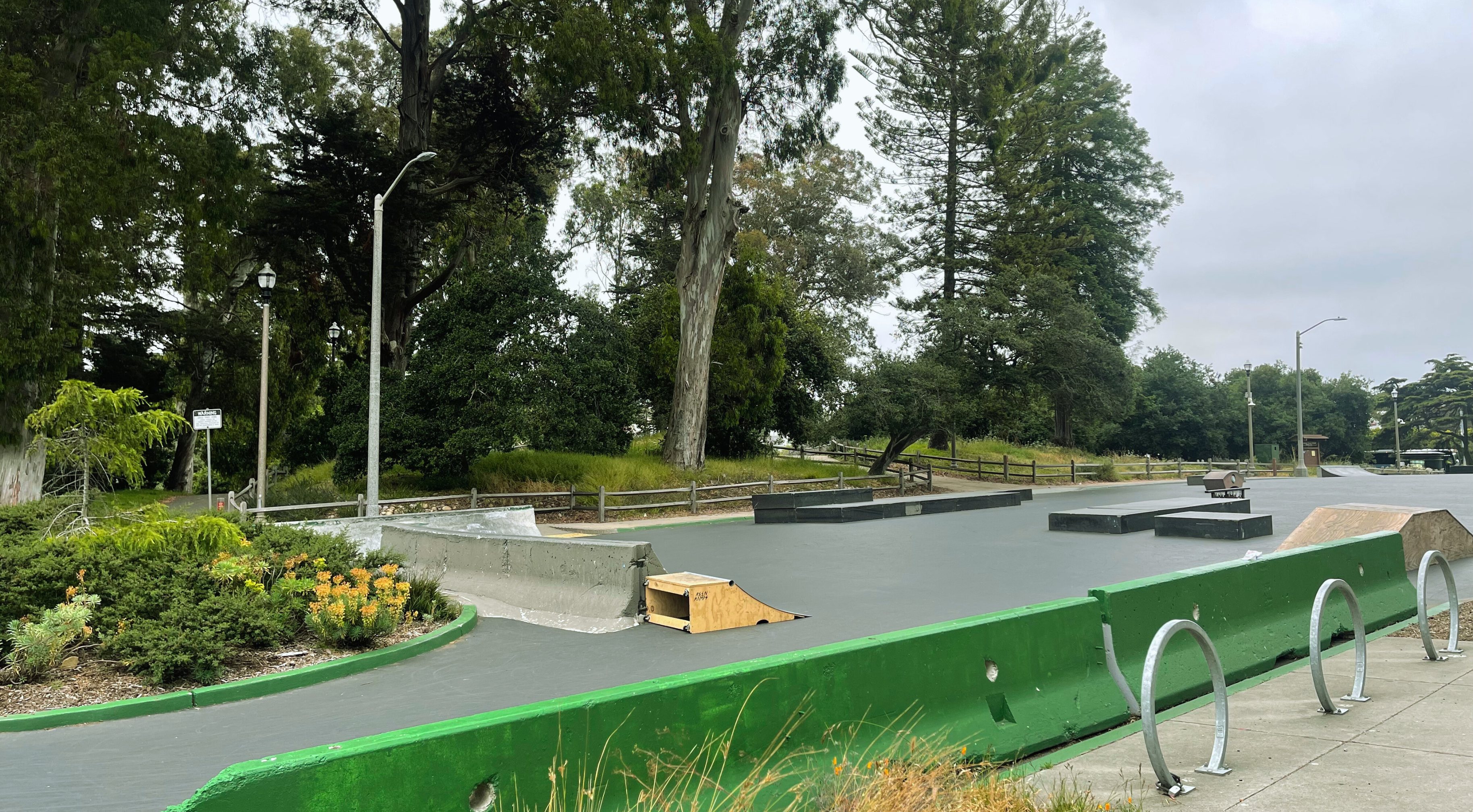Waller Street Skatepark, located on the southeast corner of Golden Gate Park is something of a miracle.
Buzzing with skateboarders of all ages and demographics, the skatepark serves as a vital recreational commons for not only the surrounding neighborhoods, but the entire city of San Francisco. How did a decommissioned street and under-utilized parking lot become a dynamic space for creativity, collaboration, and San Franciscan pride?
It’s worth starting with why a spot like this exists in the first place. Waller Street once connected to Kezar Drive, a car-centric thoroughfare that routes through Golden Gate Park. In the 1998 Golden Gate Park Master Plan, Waller Street was designated for closure because it was deemed unnecessary. As a result green medians were placed between the end of Waller and Kezar in 2007, prompting the empty concrete space to be used as a parking lot instead.
How did this unassuming space become entwined with San Francisco’s skateboarding culture? As soon as skateboards reached SF’s steep rolling hills, new ideas on how to navigate the city began popping up everywhere. Trends like hill bombing—skating down hills at breakneck speeds—became hallmarks of San Francisco skateboarding, while spots like Hubba Hideout (Embarcadero Center) and China Banks (Portsmouth Square) received international attention, invigorating the local skating community with new pride in their urban landscape. With such a unique skateboarding culture bubbling up, locals were eager to find new places to skate around the city.
Enter Waller Street Skatepark: scraping together money from the community, a group of skaters gathered the resources for the first features at Waller between 2010 and 2011. The original ledges were sourced from Market Street (a typically hostile environment for skateboarding), transported, and placed at Waller Street, kicking off a decade of transformation for the space.
The skate community wasn’t just integral to the formation of the park. Community maintenance of the space was critical to Waller’s growth and long-term preservation, as well. From the original stewards patching up features and waxing ledges, to one-time participants picking up trash, a culture of collective stewardship and ownership have been passed from one skater to the next.
Neighbors were initially skeptical of Waller’s skater-led transformation. In its early phases, the park possessed a haphazard look that may have felt disheveled and unsightly compared to an aesthetically-curated skatepark.
Beyond the physical aspects that made Waller Street Skatepark stand out, the social culture of skateboarding also contributed to Waller’s transgressive status in the neighborhood. Often considered to be part of a “counter-culture”, skateboarding has often been looked down on in cities as an activity that brings noise, chaos, and property destruction into urban spaces.
However, after the street’s decommission (meaning it was no longer maintained by the city), Waller’s first stewards were able to keep the park clean and functional, proving to the neighborhood and the City of San Francisco that public spaces for skateboarding could bring life, activity, and connection to otherwise ignored spaces.
Along with tidiness and active engagement, safety also became a core value of Waller’s social ecosystem. Regulars express a deep appreciation for the “watching each other’s backs” mentality at Waller. Micro-interactions occur every day at Waller that encourage community awareness. Skaters time their runs around others to avoid collisions. Strangers watch each other’s bags. Regulars de-escalate aggressive behavior. Together, these behaviors have developed into an ethos of community awareness. This has allowed for historically marginalized groups in skateboarding including women, people of color, and queer folks to find community at Waller, an atmosphere not reflected to the same degree at other skate parks.
Now that Waller Street Skatepark is under the purview of RPD, we can reflect on what this space has meant over the last decade and what it will mean into the future. Waller Street Skatepark is an undeniable example of how cities can learn from their residents. People know their backyard, and they know how to change it, given the time, space, and money. From grassroots funding initiatives to collective activation to stewardship and community awareness initiatives, the friendly, open community at Waller Street Skatepark is a lesson in letting communities take the lead in public spaces.
We’re sorry to hear about the recent passing of Zion Williams who was an important figure at Waller Street Skatepark. You can read more about his life and impact on San Francisco’s skateboarding community here.

